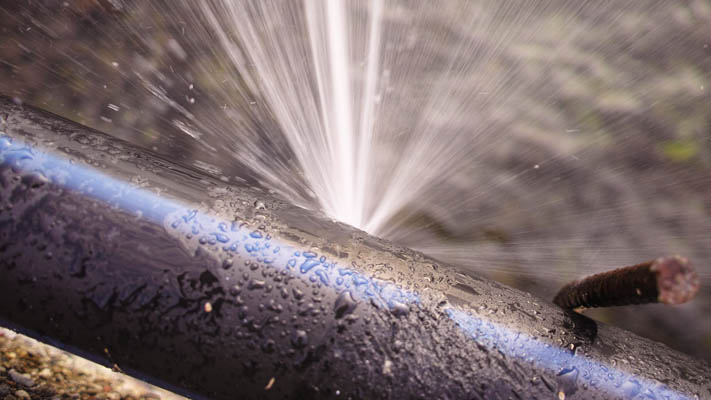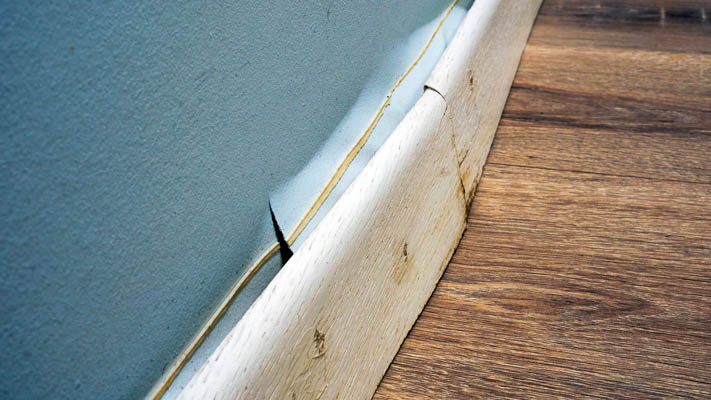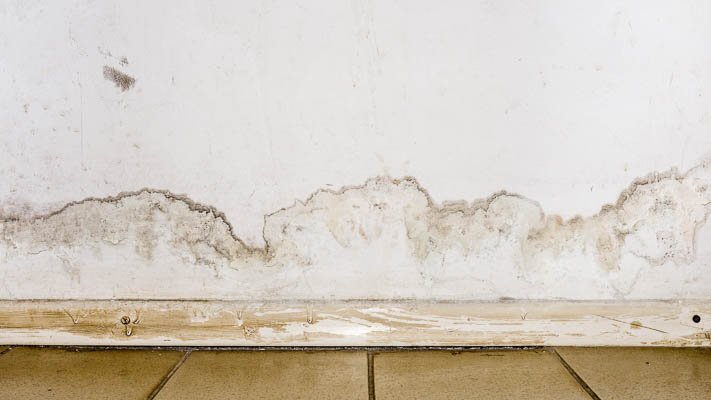What Causes Baseboard Stains?
Baseboard stains are usually caused by some form of moisture intrusion. Common causes include leaks from nearby plumbing pipes, leaks under slab foundations, water intrusion from outside (especially during heavy rain or flooding), spills or standing water left to sit near walls and floors, as well as humidity and condensation in poorly ventilated spaces.
Baseboards are typically made from MDF, wood, or composite materials—all of which are highly absorbent. When exposed to moisture, they can quickly become discolored, swollen, or soft to the touch. You may notice yellow or brown staining, bubbling paint, or even mold growth around the edges.
If you're seeing baseboard damage in rooms with plumbing fixtures or along exterior walls, it's worth investigating further. Surface-level cleaning or repainting won't solve the problem if water continues to seep in from behind.
Do I Need to Replace My Pipes to Stop Baseboard Stains?
Not all baseboard stains require a full home repipe, however, in many cases (especially in older homes or homes with repeated plumbing issues) replacing your home's damaged pipes can be the most effective long-term solution.
If a single leak is responsible for the staining (e.g., a loose joint, cracked fitting, or small area of corrosion), a targeted repair may be enough to resolve the issue. Professional plumbers often address these isolated leaks using methods like epoxy patching, replacing short sections of damaged pipe, or using trenchless technologies such as pipe relining for outbound waste lines.
However, baseboard stains that recur over time often point to a deeper issue within the plumbing system itself. When multiple leaks develop in different areas, or when stains appear in more than one room, it's usually a sign that the pipes are reaching the end of their service life.

Galvanized steel and older copper pipes, for instance, are prone to corrosion, pinhole leaks, and pressure problems as they age. These conditions make it increasingly difficult to rely on short-term repairs alone, and it may be time to consider whole-house repiping.
Modern piping materials like PEX tubing offer superior resistance to corrosion, fewer joints (which means fewer leak points), and long-term durability. Replacing old pipes not only stops the current leak - it protects your home from future water damage and improves your plumbing system's overall performance for years to come.
Get your free estimate today
With over 75,000 repipes completed, we've perfected our One-Stop Repipe™ for your home.
Get a Free Quote for Whole-House Repiping Today
Here at Repipe Specialists, we've permanently fixed outdated pipes causing baseboard stains in thousands of homes by repiping them with PEX tubing. We consistently receive positive feedback from customers about their overall home repipe experiences and often exceed expectations in the following areas:
- Speed: Our repipe crews typically complete a repipe in a day, returning on another day for wall patching.
- Convenience: Through our One-Stop Repipe™ Process, we handle everything from permits, to wall patching, to inspections.
- Cleanliness: Our crews are trained to protect your home while working (we cover all surfaces with protective sheeting), and to clean up fully at the end of each day.
- Peace of Mind: Repipe Specialists is a fully licensed plumber in every state we operate in, and we back all of our repipes with a lifetime warranty.
- Financing programs: To help take the sting out of unplanned repipe expenses, we offer several financing programs.
- Price: As a specialist that performs hundreds of repipes a week, we can deliver high quality repipes at a lower cost vs generalist plumbers. Our quotes typically range from $4,500 to $15,000 depending on the size and complexity of your project. We have an article that covers repipe cost factors in detail.
Schedule a free in-home consult, and one of our local repipe consultants will explain all your repipe options and provide you with a written, fixed-price quote. Beat hidden plumbing leaks and stop baseboard stains — repipe your leaky pipes today.


